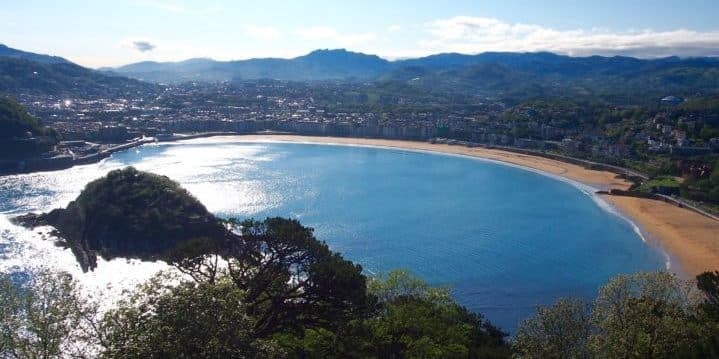
In San Sebastián, it is easy to lose track of time. Days in the legendary Basque resort town have a tendency to be slow and meditative, as if through some metaphysical contract they have agreed to discretely slip away each evening, into the lapping Bay of Biscay or the glow of crooked streetlights warming the Old Town after dusk. Walks along the Urumea melt into meditations on Belle Époque architecture and European imperial history. Restaurants, as the great theaters of the region, host meals that without celebratory cause stretch long into the night, over good conversation and many bottles of txakolí. Nostalgia comes easy in San Sebastián, perhaps in part because you’re always looking back wondering where the time went.
Looking back on five days in San Sebastián, I remember a lot—including these ten things:
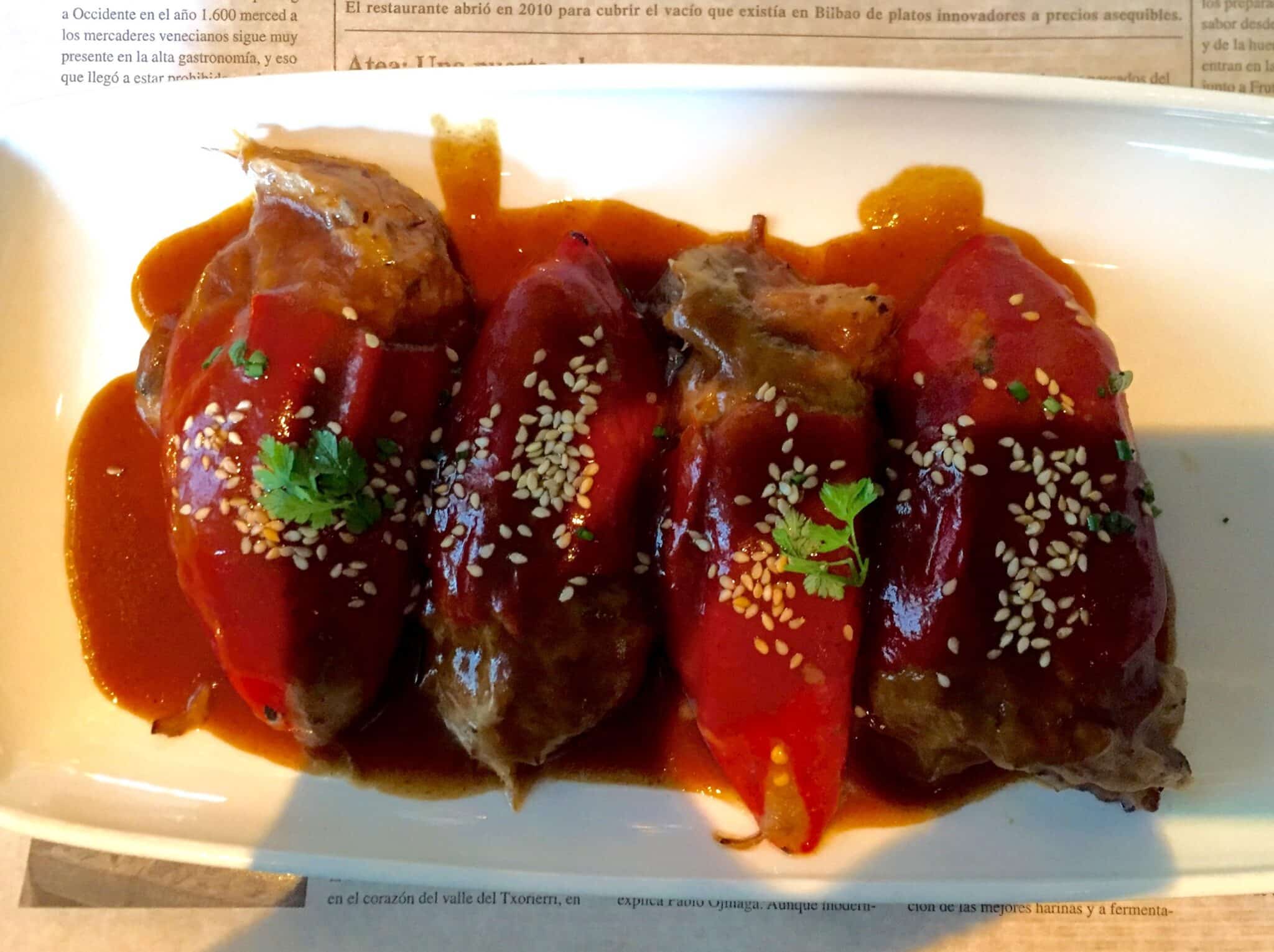
1. You will eat unforgettably well in San Sebastián
I have never eaten better, without a misstep, over the course of many days. A few of my meals in San Sebastián will live on famously in my memory; just about every bite that I converted to chemical energy was delicious, fresh and thoughtfully prepared. In the proud and endowed Basque culinary tradition, those things matter.
Most notably, it is not just that are a ton of 18-course, $200 feasts to dress up for, though such masterpieces do exist (in a city of just 186,000 people, there are three 3-Michelin-star restaurants and 16 total Michelin stars, good for the world’s second-highest concentration of stars per square meter). The most extraordinary value is in the €30-50 meals, which are occasionally world-class by virtue of having survived in the San Sebastián circuit. And more casually—perhaps between larger meals—you can savor single bites of sweet Basque flavors in the form of pintxos—single-serving bites of fresh shellfish, jamón ibérico, truffles, rich greens, etc. slung by bars across town—for nothing more than the coins in your pocket. I loved pintxos.
It is no longer in contention that all stomachs must visit San Sebastián (see The New York Times, CNN and The Telegraph for such benedictions). In 2016, it is about how many meals and pintxos you can consume there before real life rips you from the comfort of a San Sebastián table and back to the airport for your flight home. The more you eat in San Sebastián, the more you end up in awe of what’s happening there.
Why is the food so good?
Fortunately, the pace of life in San Sebastián leaves plenty of time for conversation—to delve deep, for example, into a subject like what on Earth is to be credited for the Basque culinary prowess. Over the first of many exceptional meals—oxtail-stuffed red peppers at Atea, a few riverside blocks from the Guggenheim in Bilbao—I asked guide Ana, in bare terms, what was to credit for all the great food. A few factors stuck out: the fertile lands inland, the swells of creatures in the adjacent bay, a legacy of great chefs imported by inhabiting royals, the culinary schools those chefs inspired, and a proximity to France and its culinary tradition. That’s about as far as I got.
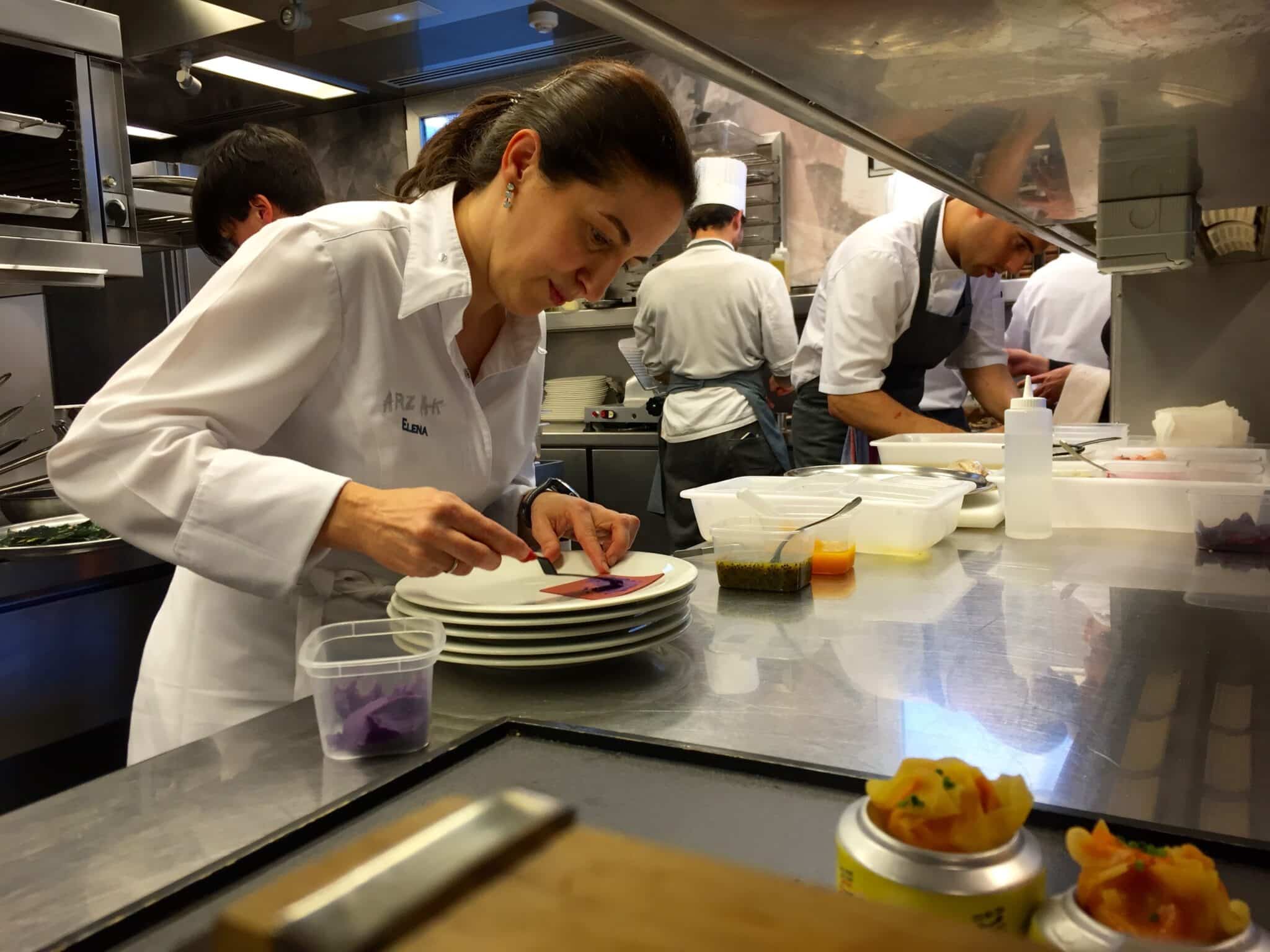
There are different words to convey the concept of a meal at 10 am and a meal at 11 am, and there are secret, invite-only cooking clubs, comprised mostly of men, wherein culinary skill is still being refined behind the scenes. But forget all that: When you visit, just know food is taken seriously in San Sebastián. Go with an empty stomach and try everything. Having said that, here are a few places to start:
- Arzak — What to say. It’s the 21st best restaurant in the world at last tally, and some misplaced generosity allowed me (and my media group) a private tour with chef Elena Arzak (she leads it with her father, the food god Juan Mari Arazak) and a seat at her in-kitchen chef’s table. The 10-course (plus) meal was customized for my plate—with a helping of the “caviar of vegetables” and a nudge to try the pigeon (which was amazing)—by a woman named the world’s best female chef just four years ago. Wine and cocktails poured, and the force of the ambitions arriving one after another out of the kitchen kept us entranced, at the table, for 3.5 hours. Factoring in our adventure inside the upstairs, mad-scientist-style test kitchen (with the “bank of ideas”), it was the single best food experience I’ve ever had. And because it matters, Elena was an incredibly kind person.
- Mirador de Ulia — One Michelin star, one view looking over the Playa de la Concha and a skilled chef who grew up inside the walls that now enclose his restaurant.

Course in spoons at Mirador de Ulia - Nie Neu — Just excellent. Located beside the modernist glass-cube Kursaal, an impressive site itself.
- San Sebastián Food — Tours, VIP tastings and much more from what is really the only such operation in the food capital.
- Cider houses — Cider (alcoholic) is big in this part of the world. There are some 60 cider houses (including these six) in greater San Sebastián, all of which open their doors to great excitement each January. In season (January-May), a night at a cider house is a shortcut to a fantastic, immersive, cider-soaked time. Plates and tables are shared (menus are often fixed), and it’s unsupervised in that European, life-can-be-trusted sort of way. When you’re ready for more cider, you walk yourself to the barrel room and: nuzzle up to a giant, 10-foot high barrel of oak; grab the spigot with one arm and stretch out the other so that your glass hangs, mouth facing the barrel, a few feet away; crank the spigot open, releasing a pressurized stream of alcohol; and literally catch the cider spewing out before closing the spigot back up. A txotx is a two-finger pour taken this way. It happens in a flash, and cider ends up everywhere. That’s okay, because you’re in Basque Country. At Petritegi Cyder House, €28.75 returned a full dinner of shared plates (steak, cod omelet, cod with green peppers, sugary crepes called cigarrillos de mantequilla de Tolosa) and all the cider I could drink before morning.

At Petritegi Cyder House - Idiazabal — One of the premier cheeses of the region, made from sheep’s milk. I found it to be an acquired taste that I actually did acquire, especially as a complimentary flavor.
- Txakoli — The beloved sparkling white wine of nearby Getaria. Try it at Akarregi Txiki, which puts out 10% of the regional production and hosts guests at a truly vibrant hillside campus by the sea. For what it’s worth, in-house chef Ismael Iglesias also served my group the first tuna of the season and a remarkable strawberry dessert.
San Sebastián’s 3-Michelin star restaurants, in 2016
1. Arzak
2. Akelarre
3. Martín Berasategu
**Mugaritz, currently the 7th-best restaurant in the world, only has two Michelin stars. It deserves a callout, as well.
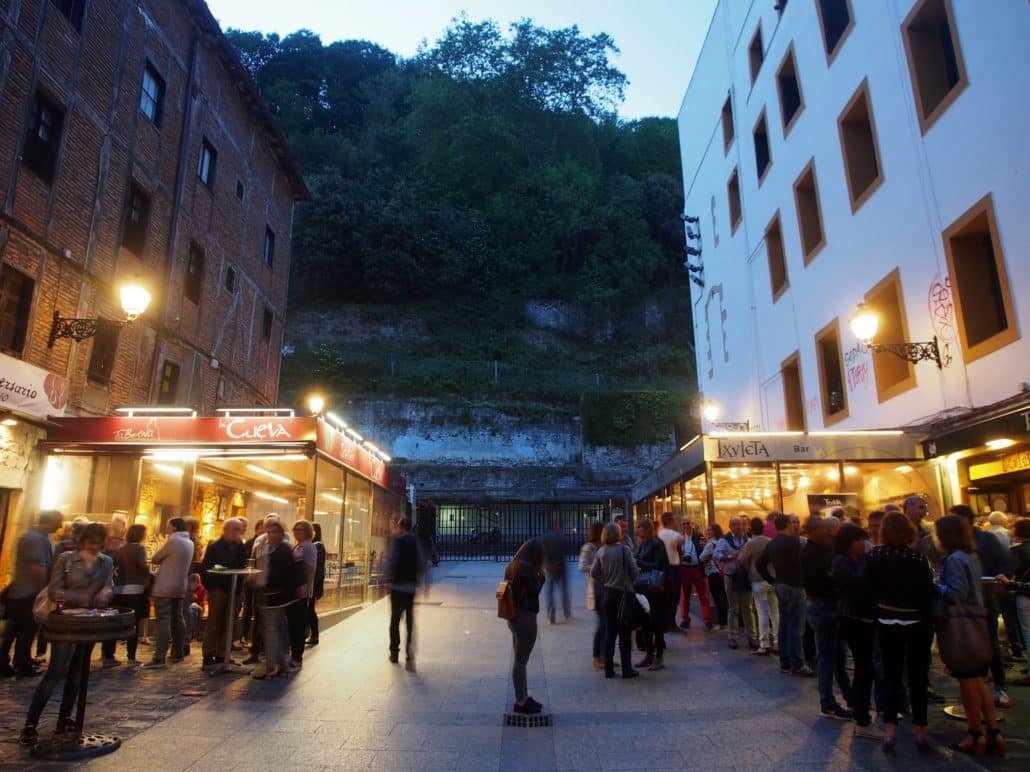
2. A good night out is about pintxos, wine and beer
Pintxos are not exactly tapas, and not exactly the meaning of Basque life. They exist somewhere in the middle, as single-serving small bites of infinitesimal iterations consumed daily, nightly, and even hourly by all who find peace enough to wring the good stuff out of life. The social impulses that inspire good meals in San Sebastián are most easily indulged via pintxos, in the worn stone streets of the Old Town, where pintxo bars are laterally stacked like playing cards. You could spend hours at one, but a good night or morning walk could take you to five, six or ten.
You don’t usually sit; instead, you stay on your feet so that you may be swept, as if by human current, off to the next stop at a moment’s notice. At each stop, you flip Euro coins to whoever’s proudly tending bar in exchange for fine jamón ibérico and idiazabal on toasted bread—or a finger’s worth of beer or wine, or something whimsical with cod, and on and on. There’s a glass-clinking, machine-like efficiency to these pintxo transactions, as though the very survival of Basque life depends on them. It might.
I recall a number of pintxo-hops—actually called txikiteos—in San Sebastián, and at least one ran late into the night. I adore them as memories, and more than that as tangible applications of a perspective I so admire: that life can and should be lived intimately, socially; that the labor of creation should be rewarded most decoratively in the spheres of food, land and beverage; and that the impulses to actualize should drive people together in a social fabric bound as well to the cobbled streets and cramped watering holes of the ancients. This is life at its best. Time, as it is often applied here in the US, matters less.
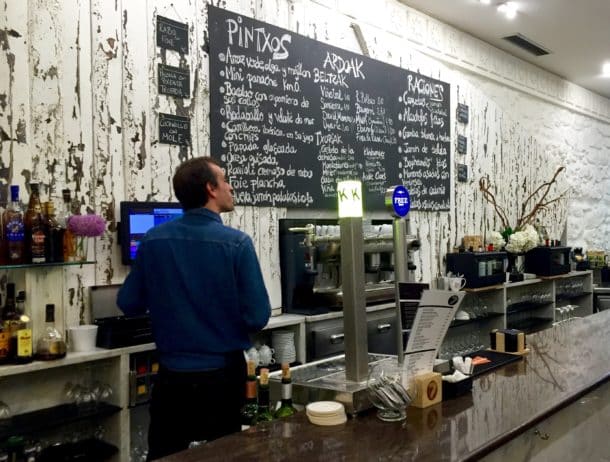
3. You should not throw away your pintxo toothpicks
Pintxos are small, usually held together by toothpicks. These toothpicks are important. If and when you take pintxos inside a cozy pintxo bar in San Sebastián’s Old Town, you must remember that it is not uncommon to pay for your pintxos after you’ve devoured them all (rather than one by one). When you’re ready to move on to the next stop, you return to the bar and hand over your scraps. The toothpicks you return are tallied, math is done and then you pay the money you owe.

4. In the Basque Country, 4 + 3 = 1
This is sort of a stupid way to title this item. Let me explain:
In San Sebastián, you might see “4 + 3 = 1” graffitied on a wall somewhere. Here is what that means: the 4 Basque provinces in Spain and the 3 Basque provinces in France are together one: the prideful, trans-national Basque Country. It’s an interesting place:
- The Basque Country (Euskal Herria in the Basque language) encompasses parts of northeastern Spain and southwestern France. The French side includes Biarritz, Bayonne and Saint-Jean-de-Luz.
- The Spanish portion is one of four major sub-Spains granted semi-autonomous status by the Kingdom of Spain, not unlike Catalonia. The French government has done no such thing for its own Basques, and so on the Spanish side of the border, you will find Basque culture more inflamed, and the Basque language more widely spoken.
- The Basque language is known as Euskara, and it bears resemblance to no other modern language. Not one. It is alien and as an outsider, you will require the assistance of Amy Adams’ character in Arrival to make sense of it.
- San Sebastián is referred to in this local tongue as Donostia.
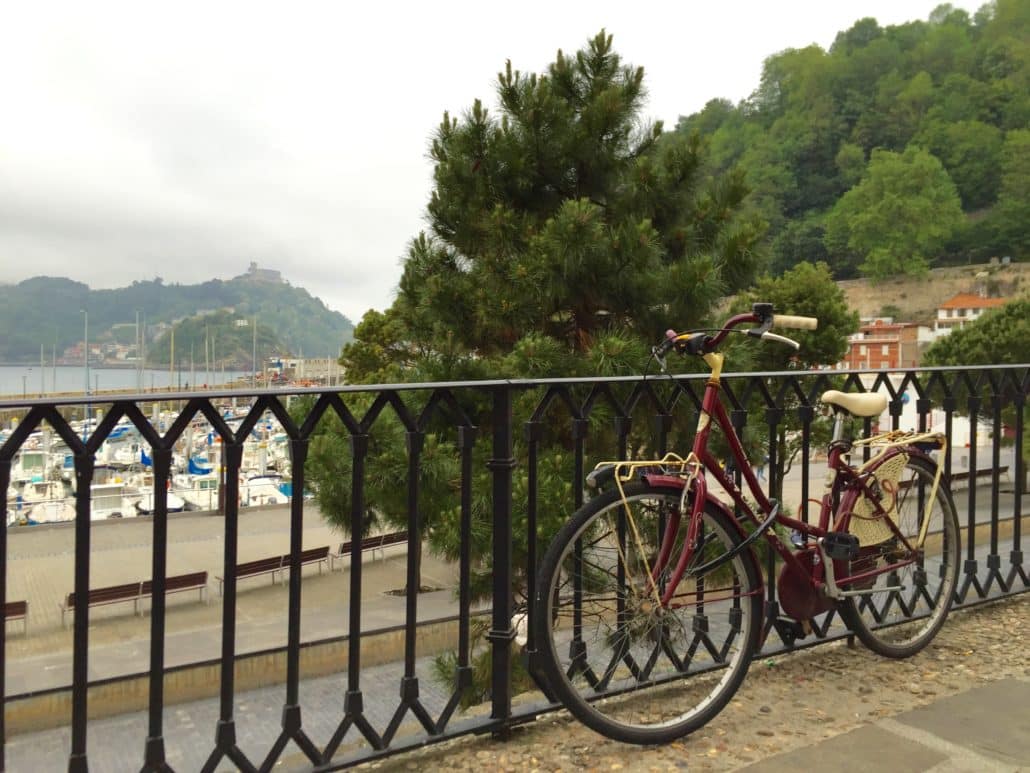
5. “San Sebastián is the best summer in the world”
A guy said this, and I liked it a lot. It felt right. For starters, the city’s central beach runs right beside the pedestrian-mobbed downtown area. Across history, beaches and their potent tidal rhythms have done the societies beside them a lot of good, and in San Sebastián, home to the warmest waters in Europe, this remains true.
An air of beachy-ness defines the city. Life feels easier. Palm trees, long ago imported from Cuba and the Caribbean, bounce with the wind off the water. The c-shaped Playa de La Concha is the spiritual anchor of this town so enraptured by the slow life, and this is nothing new; the visiting royals and aristocrats responsible for its elegance have known that for at least two centuries. As Lonely Planet puts it, Playa de La Concha “fulfill[s] almost every idea of how a perfect city beach should be formed.”
The weather fits, as well, swinging from warm and buoyant to no worse than windbreaker-appropriate when it rains (today, December 7, the high is 62ºF). And it does rain. In fact, the chance of rain hangs over every Basque day like it does in Seattle and Vancouver, but the locals are unmoved by a little bad weather. There is allegedly a word in Euskara that singularly conveys the style of rain that is light and misty and does not fade away (txirimiri). In San Sebastián, the sun will be back soon enough; go eat somewhere while you wait for it.
Architecturally, a great fire is partly to credit for today’s easy elegance. In the 1830s, the city came crumbling down but for about four buildings, and the rebuild laid the foundation for what is today “the most modern city in Europe,” per my guide. In this context, “most modern” qualifies some truly fantastic Bell Epoque architecture, which left one in my media group near speechless on our first-night stroll home to the Amara Plaza Hotel. Walk along the Urumea at night, when so many facades are alight, and soak it all up. People live here. This is life for them everyday, in every season.
“If ever there were a land of leisure, it would be San Sebástian,” writes Jennifer Nalewicki for Smithsonian.com. Also well said.
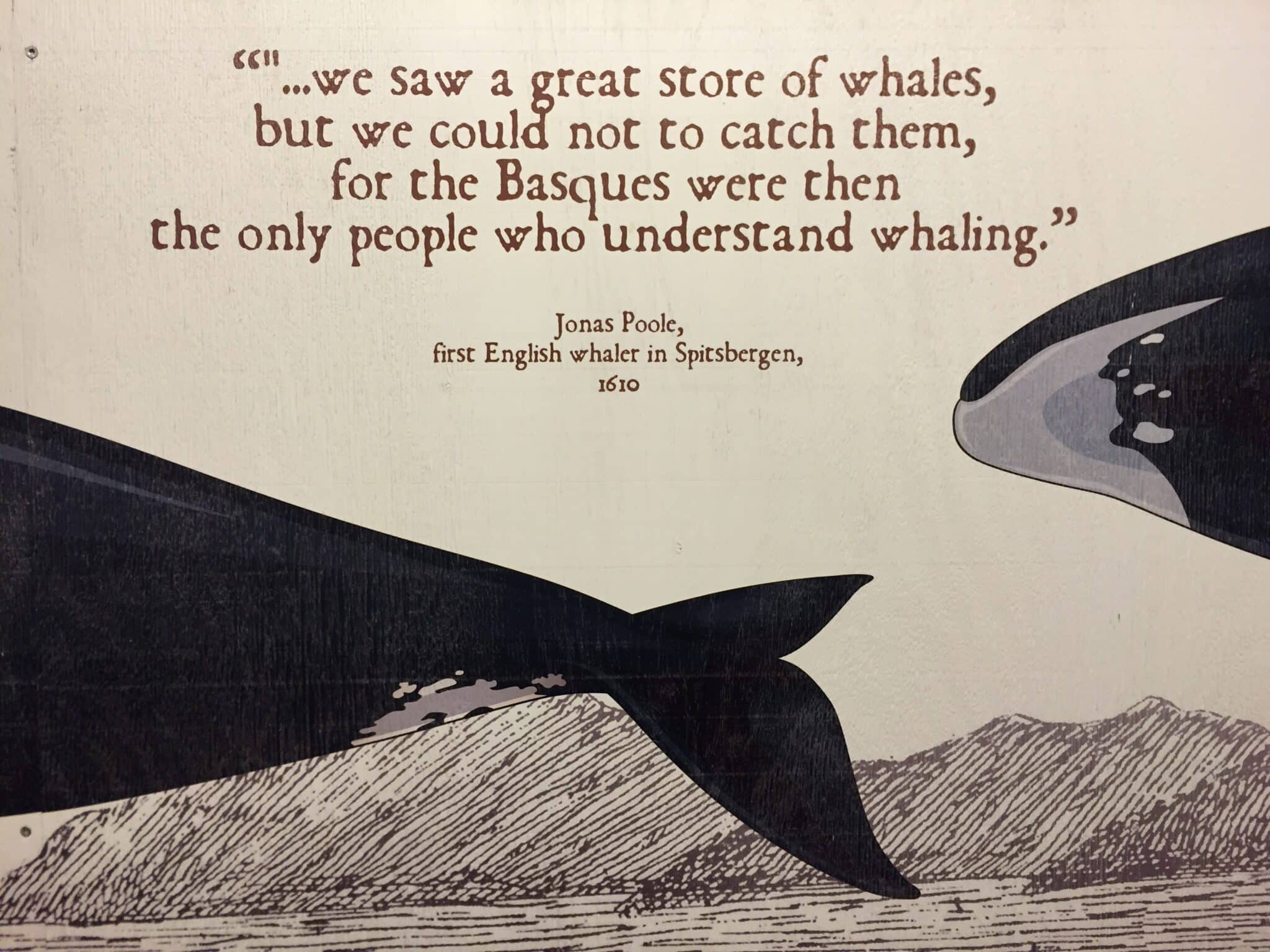
6. Basques may have been first people to North America—and to circle the globe
In 1602, when the English arrived in North America, they allegedly saw native people in a Basque whaling boat wearing European clothes. What!
Greater San Sebastián’s great whaling tradition indeed brought Europeans across the ocean an astonishingly long time ago. In fact, the Basques were alone on their whale hunts into the 17th century, the confluence of several factors: warm waters for whale breeding, deep waters to build ships in, an abundance of oak (strong) for building good ships, and the exponentially dominant skill curated over centuries in this context. In sum, some poor, doomed whales brought about a little-recognized spout of globalization that deserves more attention.

An unexpected San Sebastián highlight
Visit Albaola in nearby Pasai San Pedro for a really insightful and wonderful time. The highlight here is the colossal effort to build—and then literally sail across the Atlantic—an exact replica of a 1565 Basque whaling ship known as the San Juan. The original San Juan, which sank back then holding legendary treasures, has itself inspired a National Geographic cover, a UNESCO site and a reimagining of history. You’ll learn about it all with the help of the inspired Albaola group.
Also in the category of sailing, the first man to circumnavigate the world hailed from Getaria, a stacked seaside village some 20 minutes from San Sebastián. Not Ferdinand Magellan, the expedition’s captain who actually died before completing the trip, but his first mate, who took over and therefore gets the glory: Juan Sebastián Elcano.

7. Jai alai was born here
I just watched this ESPN 30 for 30 on jai alai in the US, and I still don’t really get it. But I’d like to. I’ve seen it called the “ballet with bullets,” and that the rock-hard, near-baseball-sized ball (pelota) has been clocked by Guinness whipping past heads at 188 mph. At the least, it’s an international sensation that was born and raised in the Basque Country.
Jai alai made land in America around the turn of the 20th century, possibly in sync with the 1904 Word’s Fair in St. Louis. By then, the world’s jai alai appetite had swollen mightily, and stars of the Spanish jai alai circuit were splitting what were likely very pleasant years between Spain and Cuba, cestas (“baskets”; instruments of jai alai play) in tow. Despite a betting-related surge in popularity and the inability of south Florida to behave like the rest of the country, the momentum behind jai alai eventually sputtered. That sputtering is well-detailed in the above 30 for 30. Nonetheless, the “fastest sport in the world” has left an enduring mark on the overlapping worlds of art and athletics.
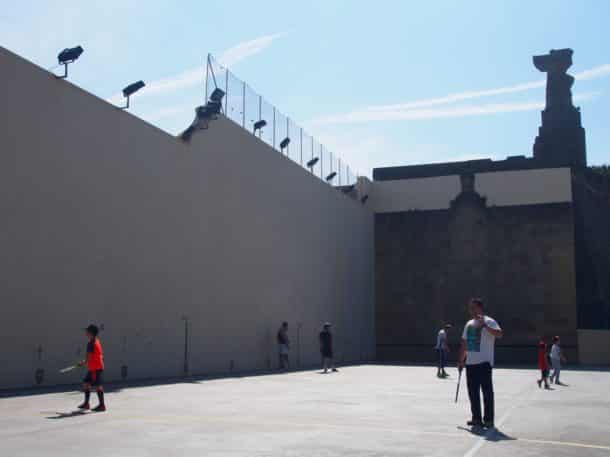
It is a game true to the Basque mold, a theater of finesse, machismo and tradition. My guide shared that jai alai in fact owes its name to the San Sebastián neighborhood in which it grew great, but so far I’ve not been able to verify that. The Basque Country as a more abstract whole is a more established birthplace—and today, it is a place to see the game in its finest form. This New York Times piece suggests fishing for invites at a bar. Jai alai tours are also available through the likes of Viator, which might be a surer bet if you absolutely must see it. If just knowing is enough for you, I get that.
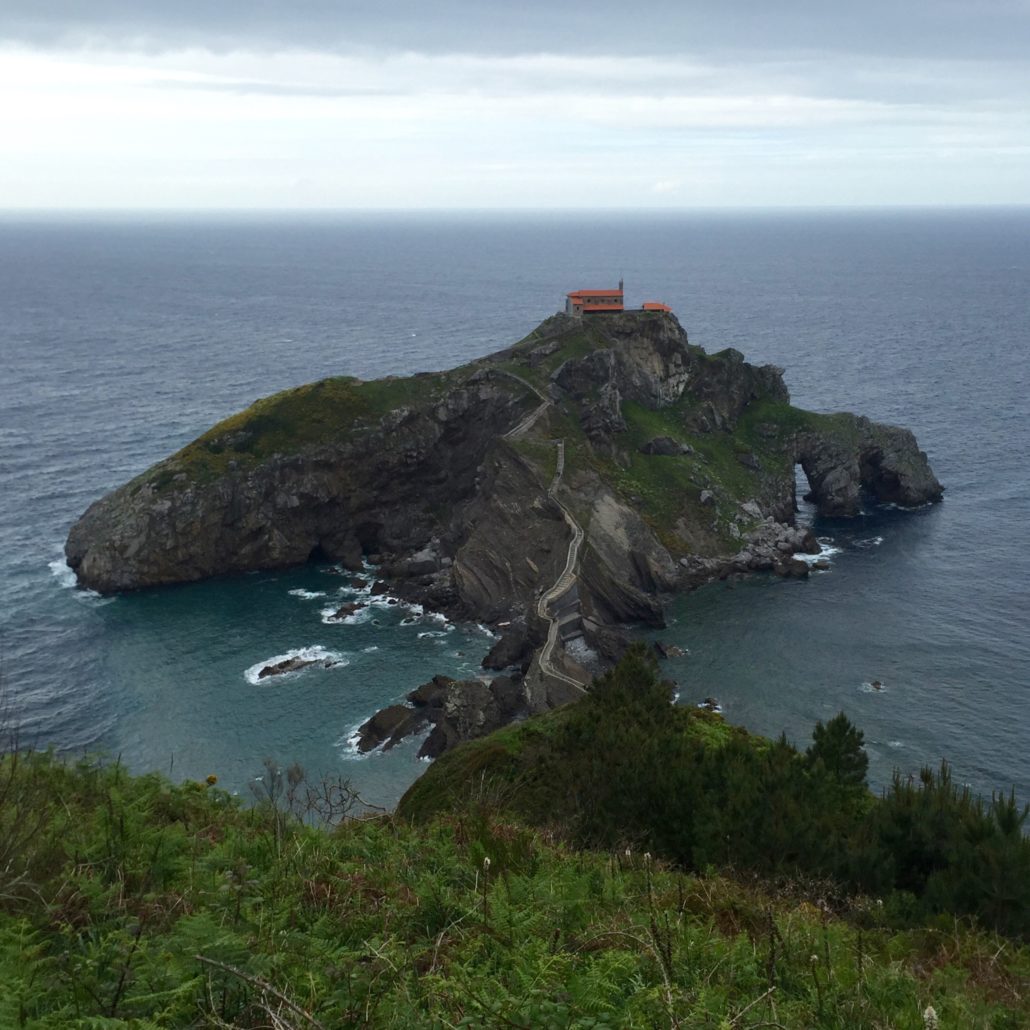
8. The Basque coastline is stunning
San Juan de Gaztelugatxe—drivable from San Sebastián in under two hours, and from Bilbao in less—is one of the cooler places I’ve ever set eyes on. It’s a small chapel, itself architecturally bland, set atop a dramatic protrusion of rock and tied precipitously to the mainland by a single, winding thread of stone pathway.
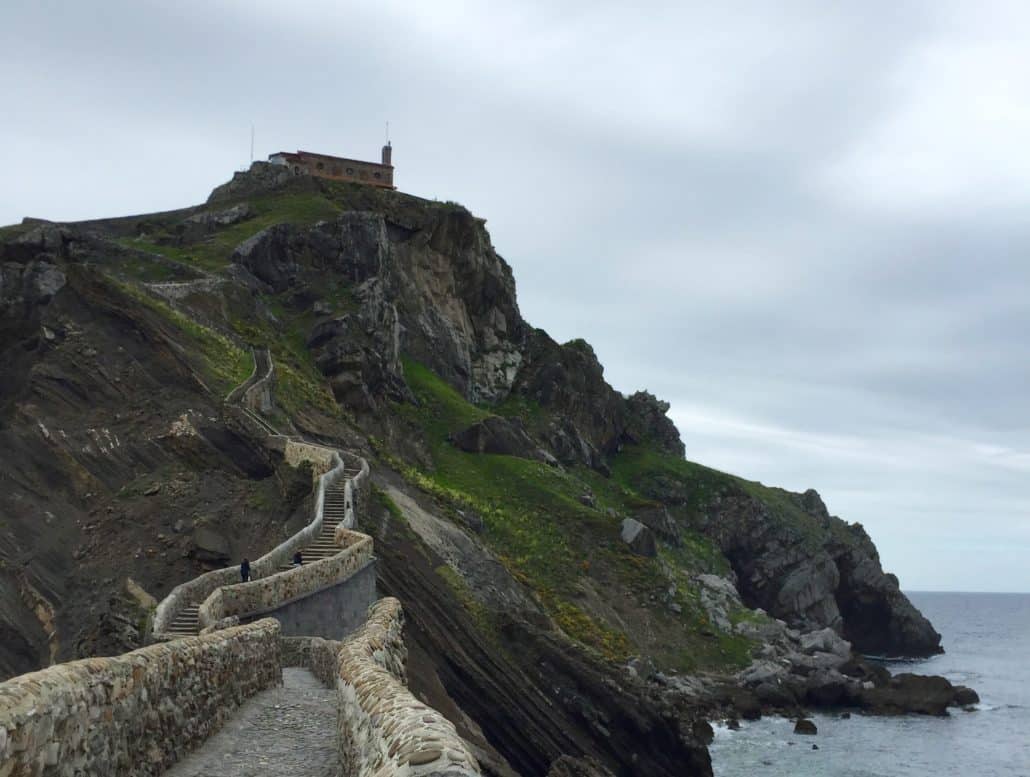
On my visit, I rode the 3518 Bizkaibus about 45 minutes from Bilbao to Bakio, a coastal swelling adjacent to the site. In the absence of any bearings/the second bus I was told to look for, my choice was to set off blindly along the hilly coast in the general direction of San Juan de Gaztelugatxe, hoping for salvation. About 45 minutes later I spotted it through a break in the water-side trees: the crest of San Juan de Gaztelugatxe, framed like a postcard. I recall the wind whipping mercifully against my aching, perspiring body as I summited this peculiar, beguiling landmark. Lovely.
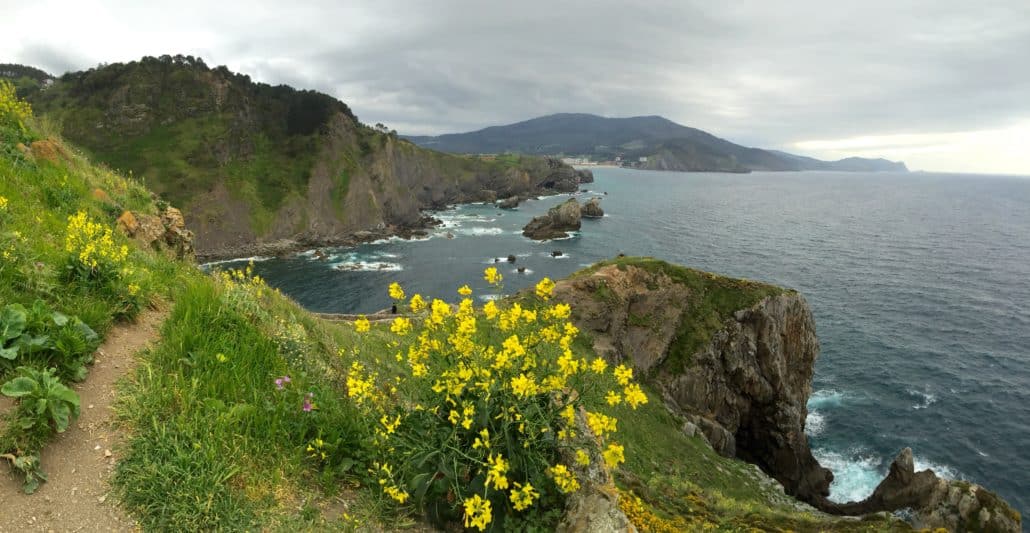
Through San Juan de Gaztelugatxe and for a few hundred miles around it, the seam between water and land in northeastern Spain swells with the drama of the nearby Pyrenees to spectacular, photogenic heights. The sandy beaches of towns like Bakio are linked by green-sewn cliffs that erupt out of and then dive back toward the Bay of Biscay. Seated on the far shoulder of San Juan de Gaztelugatxe, in thoughtful languor, I gazed out at the incredible Spanish coast from the perch above.
San Sebastián maintains a rare symbiosis with the region that feeds it, and I would go so far as to posit that the shared pride in life and land is part of what makes the city so great. To that point, see San Sebastián, but also leave time to settle deeper into the region. Consider renting a car, tacking yourself to a guided tour (maybe with Viator) or submitting yourself to Spanish-speaking public transit (as I did) so you can walk around out there. San Sebastián Tourism can help.
And don’t miss the Guggenheim
Bilbao, about an hour by car from San Sebastián, is also Basque and home to a much larger international airport than San Sebastián, and so you’ll likely fly in there. Also in Bilbao is the spectacular Guggenheim Bilbao.
9. This kid can do flips
One evening, to lose and then re-establish my bearings, I walked northeast along la Playa de la Concha, tracing its curve until I reached De Cervantes Plaza, where a three-man band was wailing on through a light sprinkling of rain. I paused to listen; unmoved by the Spanish lyrics, I continued down the boardwalk, still hugging the water line, until I reached what became my favorite place in San Sebastián: a wooden outcrop beside the Real Club Nautico de San Sebastián. It was here that I took my deepest breaths of San Sebastián, in the way that any transient pairing of person and place must reach some moment of maximum harmony. In that moment, I watched the kid above do flips for no one in particular.

10. It’s a 2016 European Capital of Culture
In 2017, residents and guests of San Sebastián will have more than usual to be nostalgic for, as 2016 may have been the best year yet for this city of 186,000. With Wroclaw, Poland, it was bestowed the very meaningful title of European Capital of Culture. After 168 hours of planned fiesta-ing to kick things off in January, the focus pivoted to enhance the city’s slate of artistic, intellectual and otherwise purposeful experiences. All year, the Basque way of life has run richer, fuller, more theatric.
Through the summer months, for example, local players spun a version of A Midsummer Night’s Dream that invited audiences to walk into and out of the action (in English and French, even). Another collective built scenes mimicking historical conflicts between Basque separatists and Spanish authorities, asking attendees to themselves build resolution through their participation. Throughout the year, museums and other institutions have been fitted to field a surge of artistic and research-related residencies to locals, investments that they hope will return incalculable value to the city and all of Europe over many years to come.
By intent, it’s bigger than San Sebastián. In the name of peace, a Europa Transit bus has spent the year carrying documentarians “to ten European cities that are or have been witness to wars or conflict”; the spirit of European collaboration has been thick in the air since the city shared in co-Capital Wroclaw’s traditional drumming. On the American side of things, I was invited to lose myself and my sense of time in San Sebastián over a few days in May, in the heat of the celebration. I succeeded. And in 2017, I may well be back.
For more information on travel to food-rich San Sebastián, visit sansebastianturismo.com.

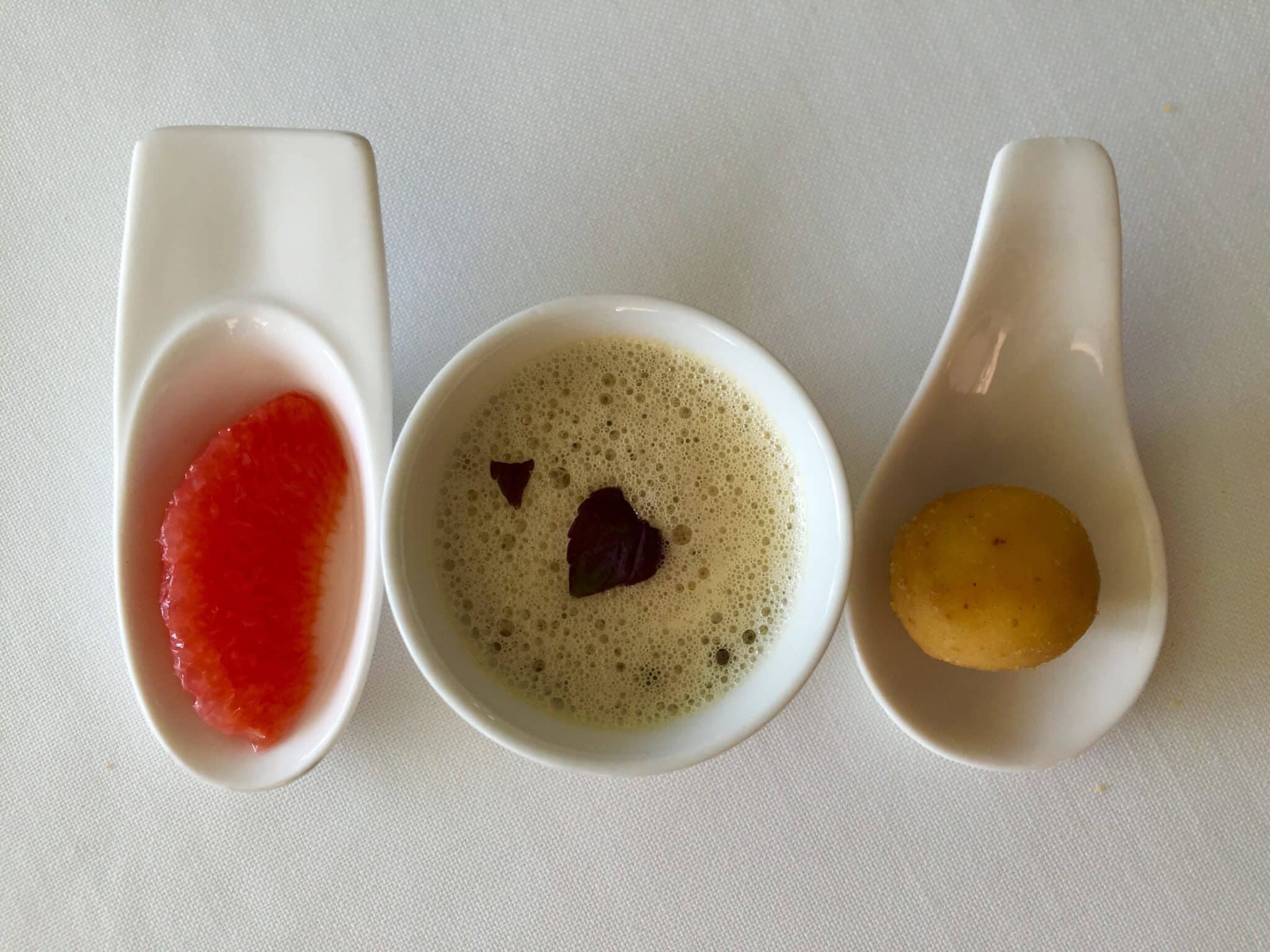
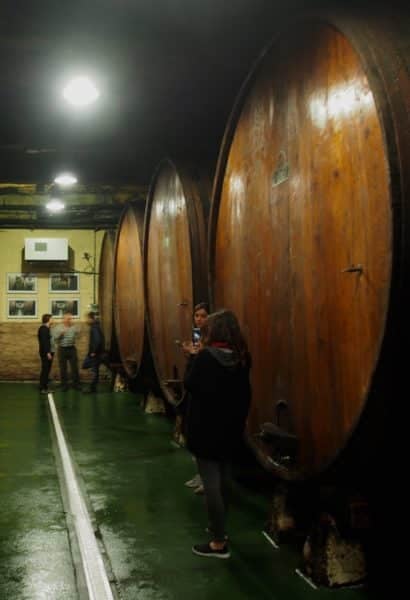




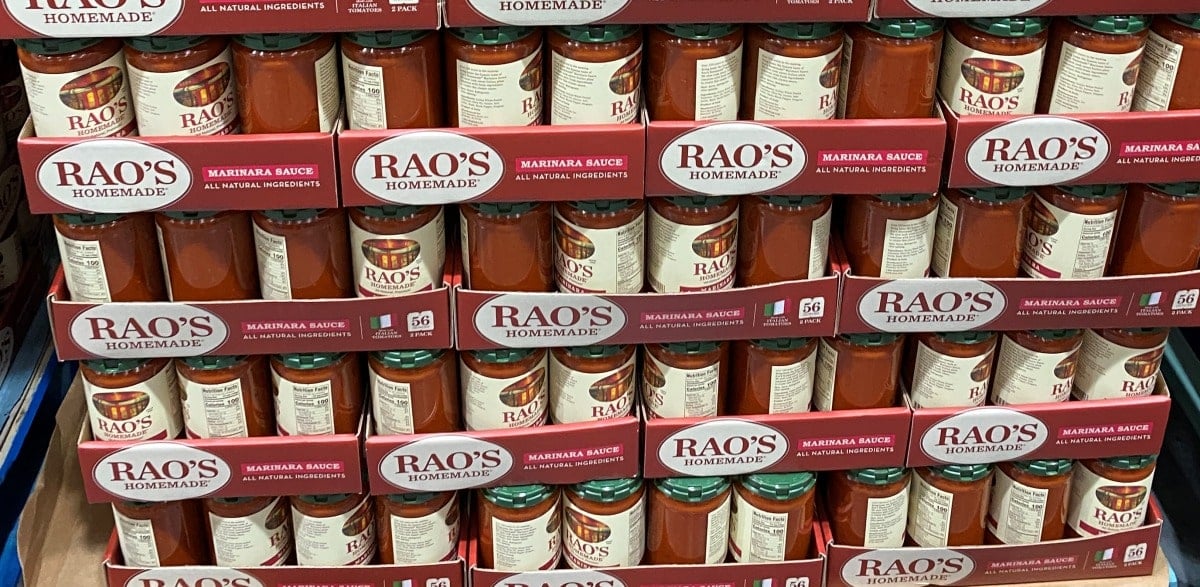

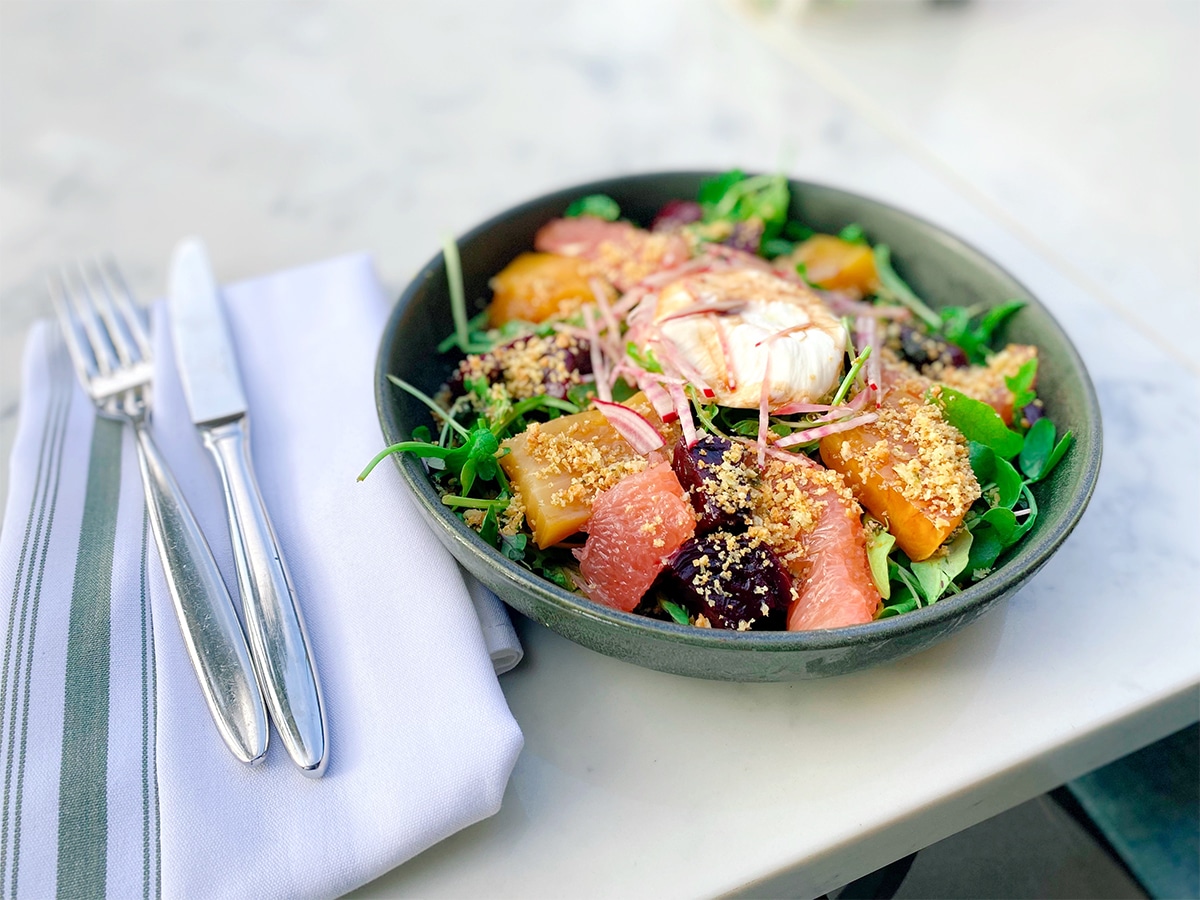
Thank you very much for your post! We appreciate that people from so far write with this respect and enthusiasm! All the people are welcomed!
Some little things: San Sebastián in euskera is Donostia; it’s not written “pinxto”, it’s “pintxo” which also means “spine (of a plant)” but do not have relation; some scenes of the 7th season of “Game of Thrones” have been filmed in San Juan de Gaztelugatxe and in the nearby town of Zumaia, in the beach. This place is known for its geological importance
Thank you, Urte!
Thank you very much for this article! I was searching for a place to visit and I think that is a very good option for my travel. San Sebastian is looking amazing, and the food is also good looking.
I hope you make it there, Chester!
You had an amazing visit to a city I now feel I know better after reading your account of it. Thank you for your eloquence Ian.
Thanks, Richard.
Many Michelin stars around there.
San Sebastián looks a great place to be at. Your post is really exhaustive and the photos entice me to plan this trip soon.I would love to make it myself. Thanks for sharing the details.
Hope you make it, Kalyan.
I just returned from ten glorious days in San Sebastian and I attest to the veracity of almost everything shared in this article.
In the future when asked about my visit, I will provide the link to this article. Well done, Ian!
Thanks, Byron!
I appreciate this post, as we are now planning our trip for next fall. Special thanks for mentioning Albaola, as this interesting ship building project is not mentioned in the guidebooks I’ve seen. Looking forward to our adventure!